After sailing 7,500 nautical miles around the Mediterranean Sea, visiting Gibraltar, Algeria, Malta, Sicily, Italy, Greece, Turkey, Corsica, Sardinia, The Balearics (twice) and Spain, we have at last landed in Las Palmas, Gran Canaria. The Canary Islands are Spanish Islands off the west coast of North Africa and a hotspot for yachts preparing to sail across the Atlantic Ocean.
The next step in our sailing adventure – to sail across the Atlantic Ocean
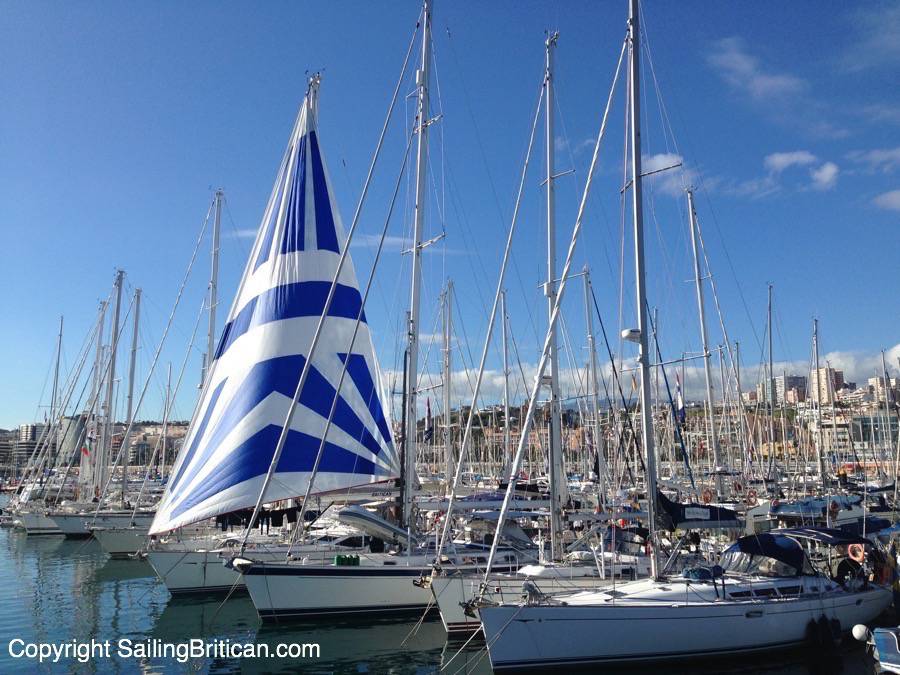
The next port of arrival will be 2,800 miles away to St Lucia in the Caribbean (Yikes!)
The trip so sail across the Atlantic Ocean will take around 18 to 20 days and we’ll cover 2,800 miles. Aside from me (American), my husband (British) and our five-year-old daughter (BRITish and AmerICAN – the name of the boat ‘Britican’), we’ll have two Americans and two New Zealanders that will be crossing with us. A total crew of seven; four men, two women, and one child.
Two of the crew are friends that we met last year while wintering (laying up in a marina for the winter) in Marina di Ragusa, Sicily. Kenny and Murray will both be leaving their lovely wives and boats in the Med while they join us across the pond. Another crewmember, Andrew, is from my hometown of Rochester, New York and will be joining Britican as a newbie sailor.
Nothing like making your first major sail a hop across the ocean – eh?
And our final crew member, Eve, was born in Ireland but has lived most of her life in NZ. Eve is a friend of a friend and offered to help me with my daughter, Sienna, during the passage so I was happy to have a bit more girl power!
My husband, daughter and I have been in Las Palmas for a couple of weeks now and, as I write, we have 20 days before we depart for our first ocean crossing. I say ‘first’ because if all goes well we’ll be crossing the Pacific (eventually) and carrying on around the world. I must say that the thought of entering the Pacific still scares me – for me, that’s really going into the unknown.
The overall plan is to take five to ten years to circumnavigate the world…
…but circling the world isn’t a ‘must-do’ plan. If we find a place we want to stay for a while, we’ll stay. If we get tired of sailing, we’ll stop or take a break. My old life was so filled with objectives, targets, visions, and missions that now I’m eager to take things as they come – to go with the flow.
The first two weeks in Las Palmas have been fairly easy-going
We arrived at the commercial harbor of Las Palmas marina around 6 am before the sun came up. My husband, Simon, and I were the only crew up. Aside from deckhand, Sienna, we had one other crewmember, Richard, on board. We let him sleep in a bit. (To read about his experience of sailing from Palma to Gibraltar to Las Palmas, read: Guest Post: What is it like to sail on Britican)
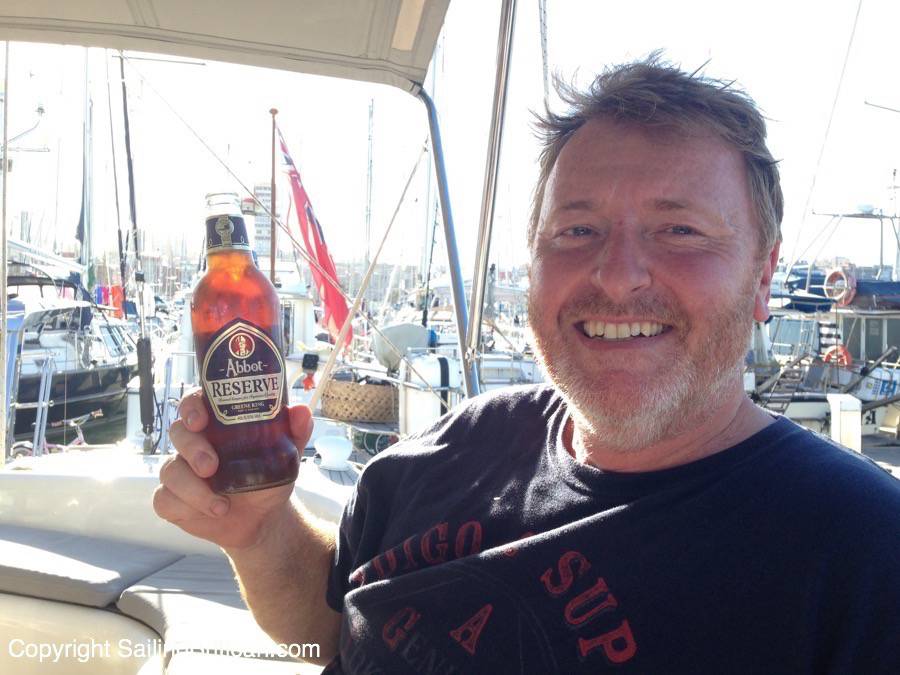
Taking it slow, Simon and I found the narrow entryway into the marina. We had difficulties determining if the red and green channel markers were streetlights or not. One of the lights didn’t blink as indicated so we proceeded with caution. As usual, the closer we got to the entrance the easier it was to make out our route.
We entered the marina and turned left to the reception dock as per indicated by our instructions
Unfortunately, there was a massive catamaran parked midway down the pontoon effectively blocking space for two more boats. Instructions said to raft onto other moored boats but the only boat we could raft, or tie onto, was a 35’ sailboat. Tying a 56’ to a 35’ sailboat didn’t feel safe and we couldn’t get next or past the catamaran. So…after five days of sailing and living through a Force 9 storm, we moored the boat alongside the pontoon facing the reception dock. And we’re going to sail across the Atlantic Ocean?
Eventually, the sun came up and the marina office opened. The marina attendant shook his head at us and told us we were in the wrong place. He then said it was up to us to figure out how to get off the pontoon we were on and come to the office. Incidentally, the pontoon door was unlocked and there wasn’t a problem.
All I wanted to do was punch the attendant’s lights out
Yes – I was grouchy. In my head, I just told myself that the attendant is probably very stressed and has absolutely no idea what we went through to get there. Over the following weeks, I noticed all the attendants at Las Palmas seemed tense. Like companies, different marinas have different cultures. Some are warm and friendly and others are cold and colorless. Las Palmas has a bit of a tense feel to it.
Anyway, Simon and I spent a day recovering from the trip by cleaning things up.
The boat was soaked – inside and out. All our wet weather gear was salt-encrusted and damp. The sheets, blankets, and cushions all needed a wash. Everything smelled – including us! Fortunate for us, our friend Richard took Sienna to the animal park giving us the time and freedom to get our home back in working order. I was starting to wonder what our Atlantic Crossing was going to be like!
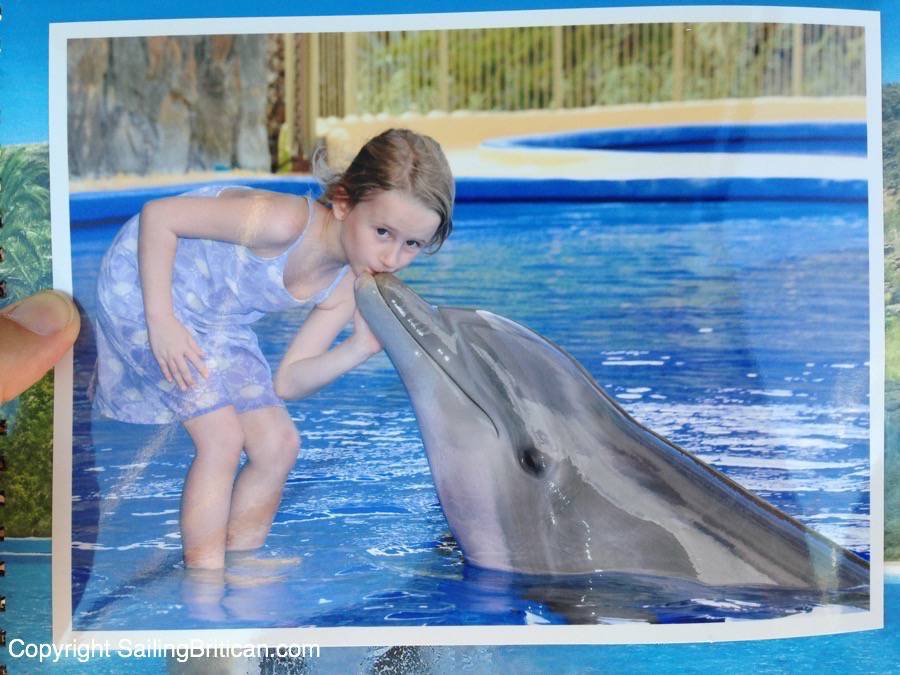
By the end of the day, things were tidy but I took a full week to do all the laundry – over 25 loads!
Not only did I have to clean the bedding for the three beds we used but my linen cupboard got soaked with seawater wetting all the bedding!
Under normal conditions, we have a few leaks on the boat but only little dribbles of water come in. When we’re in a really bad storm, water seems to find a way in by the buckets! (Keep that in mind if you don’t already have a boat – even new boats leak under harsh conditions. In fact, even new boats leak under non-harsh conditions!)
After cleaning for what felt like days, we finished the first day in Las Palmas with an enjoyable dinner at a Marina restaurant. It was Richards last night with us so we treated him for a dinner on dry, steady land. And it was time to start thinking about our sail across the Atlantic Ocean.
The next important item on our list of things ‘to-do’ was to find flights back to England for Simon and Sienna
Originally, we all wanted to fly to the UK and say our good-byes to friends and family but upon arriving in Las Palmas we didn’t feel it was safe to leave the boat. In hindsight, I definitely feel that we made the right decision.
We spent hours trying to find flights that didn’t cost an arm and leg. Eventually, I did a search on fights for ‘Today’. To our amazement, we could get flights to and from the UK for less than €200 each. Before I knew what was going on, Simon and Sienna were packed up and ready to head ‘home’ for a week leaving me on Britican alone.
Although I was sad to see my family leave, I was also excited to have a whole week on my own to sort out the boat
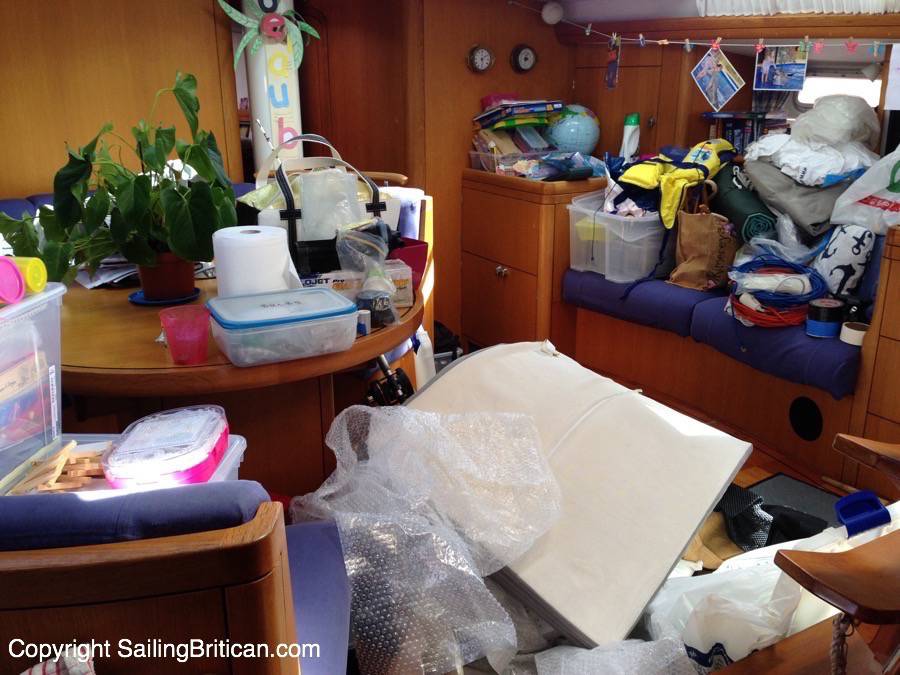
I needed to clean out all the cabinets, determine our inventory and create a spare parts list. Preparing to sail across the Atlantic Ocean is a massive job. With the two kids out of the way (yes, my husband is often a kid), I could work uninterrupted.
I thought I’d feel strange being in a foreign country alone on my boat but I thoroughly enjoyed the quiet time. Furthermore, I felt so comfortable with all the surrounding boat owners and crew. I knew if I had any issues there was a whole community of people to help me out.
One of the best things about living full time on a sailboat is that you bring your home with you wherever you go.
You feel at home even though you’re in a completely foreign area.
During the second night alone a massive swell came in and I woke to loud screeching noises around 3 am. I popped up on deck and noticed that our boat was being pushed back into the pontoon and our dingy, hanging low but still attached to the davits, was acting as a fender.
Knowing that the dingy could be badly damaged, I decided to eventually let the dingy down and pull it to the side of the boat. I also added an extra line from the pontoon to the middle of the boat helping to reduce the movement.
To my amazement, there were several boats near me crashing into the dock. Even my neighbor’s boat experienced damage to the gel coat at the back from hitting the pontoon (a brand new Oyster 545). Looking around at the wee hours of the morning, I wasn’t the only person adjusting lines and such – many people were on their boats changing the placement of fenders and tightening forward and aft lines.
I knew then that if we left our boat unattended we probably would have returned with a busted dinghy
Although the Las Palmas marina looks quite protected, it can get quite a strong swell causing the boats to pull back and forward with the surge. I was surprised at how much we and all the other boats were moving. And with a two-meter tide, you could go a bit crazy constantly adjusting lines to make sure the boat is out of the danger zone. The boats along our side of the pontoon seemed to line up straight however the boats behind us all had issues being blown to one side or the other. Just yesterday we discovered one of our lazy lines (one of two lines that hold the bow of the boat to a sunken ‘anchor’) was broken. The marina will have to get a diver down to fix that…
Loads of time is spent at Las Palmas adjusting lines and inserting fenders!
Aside from having to straighten some lines out and move the dinghy, the rest of my quiet week was spent cleaning, organizing and doing a bit of sightseeing. I took my bicycle to the old town. I walked through the shopping district, enjoyed the beach, noted all the chandleries and grocery stores and found a huge shopping mall. For the most part, I just got to grips with where things were. When Simon and Sienna returned we’d know how to get around and where to go.
One thing that really felt strange was the high police presence
Everywhere you look there are police in cars, on bikes and at night most of the clubs have around three bouncers outside. The malls all have security guards and everyone locks everything up. After spending almost two years in the Med never locking our boat, bikes or dinghy I realized how different it felt to be in a region where crime must be high. Never in my life have I been on an island and felt unsafe – I always assumed all islands had low crime due to the fact that criminals had nowhere to hide. I was wrong.
While locking up my bike at the end of our pontoon, some sort of engineer or technician working on a nearby boat came to me and in Spanish indicated I was locking my bike up wrong. He pulled out my chain and put it through my front gear plate rather than around the wheel.
That being noted, not once have I felt unsafe. I’d be happy to walk around the city at any time of day or night
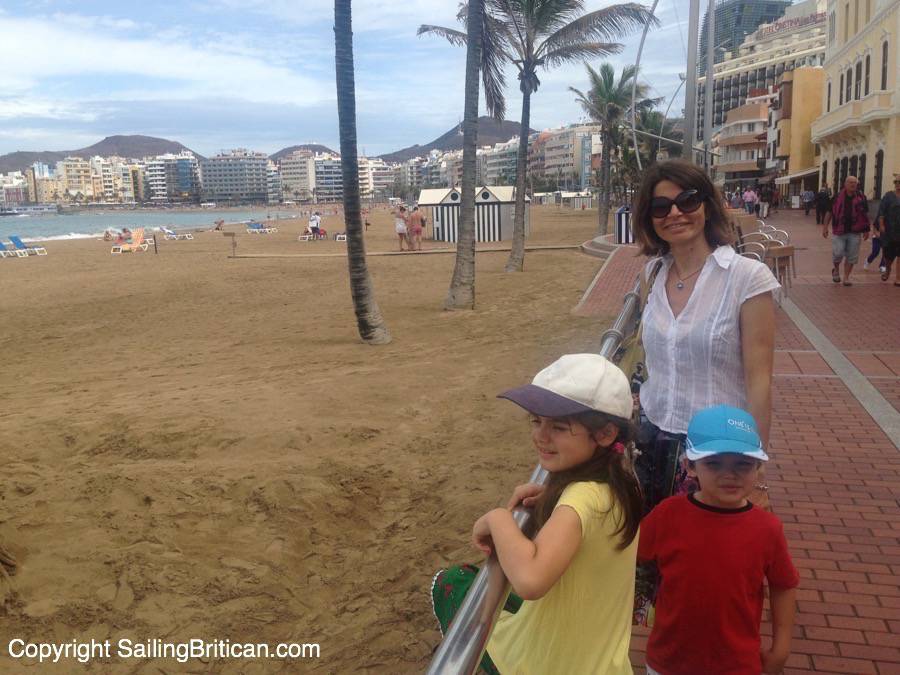
After three days of alone time, I was super excited at the arrival of my friends Kent, Anja, and her two children, Maja and Max. Anya and the kids flew in from Italy where they are currently based but she’s originally from Poland. Her husband, Kent, originally from New Zealand, is the skipper of a lovely 80+ yacht and arrived from Madera, Spain.
With my friends on the pontoon next to me I was able to enjoy some dinners out, go for long walks and enjoy coffees, chats and chilling out. I couldn’t help but think over and over again that I’m a couple of hundred miles off the north coast of Africa on a tiny island in the Atlantic yet I feel completely at home. How often do you find yourself on foreign ground and feel completely at ease AND have old and new friends around you?! All this and I’m getting ready to sail across the Atlantic Ocean!
There are a lot of issues concerning living on a sailboat full time but the rewards are priceless
Feeling a part of a community and ‘at home’ regardless as to where you are in the world is just one of the amazing benefits.
After a week, Simon and Sienna returned in time to spend ten days with Anja and the children before they headed back to Italy. We took the children for outings and then Kent and Anja took them. The kids would start off on our boat in the morning at the beach. In the evening we’d all go out to dinner or enjoy a meal cooked in. Simon and I looked after the children so Kent and Anja could go out and vice versa. We went to a potluck meal three boats down and it was great to enjoy adult time.
On our pontoon alone there must be at least fifteen children (babies to teenagers from all sorts of nationalities) and I know more are coming. I have no idea how many children have crossed doing the Atlantic Rally for Cruisers (ARC) in previous years so it will be interesting to find out if this is a big year for kids or not.
With so many children around there’s always something for the kids to do
In the short time we’ve been here we’ve had parties on the pontoon and the turnout for Halloween was incredible! Our daughter received more candy than I ever did and all she had to do was walk down one pontoon.
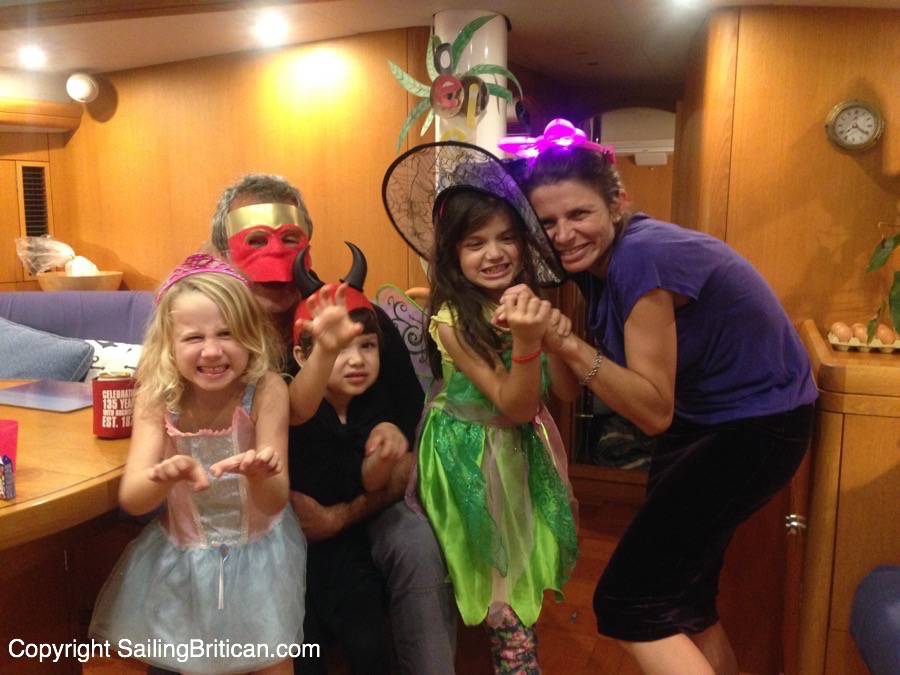
Eager to start preparing for the sail across the Atlantic Ocean I had two major projects I wanted to start
The first was to clear out all the lockers, cabinets and boxes to take a full inventory on what we had on board and what we didn’t. After four days of dragging things out, entering them on an excel sheet and creating an ‘I have no clue what this is,’ pile I was done taking stock.
I was pleasantly surprised to see that our generator service kit was full and we had loads of spare filters. And upon the clear out, I discovered things that I didn’t even know we had. Overall, it was a great exercise and the box of unknowns ended up being very small.
Once the inventory was done, I sent it to Simon in England. He put an order in with Stella Maris, our support company. Chris at Stella Maris then went to work to create a list of the things we were missing, the cost and the arrival date down in Las Palmas.
Choosing what to stock on board and what to leave behind is not an easy choice
For the most part, our decisions came down to money. You can stock every possible spare if you have the cash and the room. For us, we had neither. We decided to get a spare alternator, as losing one could be disastrous to charging our batteries. We also opted for a starter motor (not cheap) thinking that if that goes we can’t start the engine.
Aside from those two big items, we ordered spare pumps, service kits, anodes, filters, safety equipment (required by ARC) and some spare davit cables. Our spare parts order wasn’t simply for the Atlantic crossing. The hope is that we don’t need to use the major spares for a very long time. Once you get into the Caribbean we’ve been told that you can have things shipped out there but often you have to pay/bribe the locals to get the parts out of customs.
In fact, we’ve been told it’s cheaper to ask a friend to fly out to the boat carrying the part for you!
Considering we’re leaving our home turf (Europe) we felt it necessary to get everything we know we might need in the next couple of years. Furthermore, our engine is a Perkins. Not the typical Yanmar or Volvo Penta so parts are not easy to find in a chandlery.
The other big item on my list to start preparing for was FOOD!
I love food. While we’re sailing food is all I think about and talk about…it’s my saving grace. When I’m not feeling great, I just lay in the cockpit thinking about what we can have for dinner.
Considering my love of food and my unfortunate issue with seasickness, I’ve decided to cook the bulk of our dinners before we leave. The plan is to make around 20 frozen meals that can easily be defrosted, heated and served. Thus far I’ve made savory ground beef and mash, cooked meatballs, chicken Jambalyia, mild curry, dhal (lentils), burrito pie and cabbage and sausage stew.
I’m creating a binder with a food inventory and a list of recipes for meals we can easily create on the go in addition to having the frozen food. And from what I’ve been told, there’s a very high chance we’ll catch some tuna so I’m preparing recipes for that too.
If I have space in the freezer, I’ll make up some soups and lunchtime options also. There’s only so much time so I’ll do what I can do and the rest of it will take care of itself.
So those were my first biggie items – inventory/stock and food
Other things on the list include fixing leaks, servicing the generator, engine, and outboard. And servicing the winches, and preparing space for the crew. Then there’s figuring out our homeschooling plan and materials for the trip. We also had to stock the boat with food and beverages. The boat had to have all the safety requirements laid down by ARC. We need to update our First Aid bag. And let’s not forget buying Christmas presents (we won’t have much time in St Lucia before Santa comes)! All this and during that last week we’ll be attending seminars, dinners, and parties that ARC has organized!
I always thought that a sail across the Atlantic Ocean was a big thing, but I don’t think I realized how big the planning part of it is. I didn’t realize that you have to consider what you’ll do if your water maker breaks. Who thinks about it breaking! But if it does, you’ll need a back-up water supply. For everything on the boat, you need a backup. So, if your fridge or freezer goes down, you need enough food in cans/jars as a backup. If your oven fails, you need another way to cook. And if you have to abandon ship it’s not likely that anyone will find you for hours, days and possibly weeks. So you need a ‘Ditch’ or ‘Grab’ bag filled with water, food, medication, flares, fishing line and on and on.
So – overall how do I feel about our first two weeks in Las Palmas preparing to sail across the Atlantic Ocean?
Relaxed and excited.
We arrived early enough to really give us time to do things at a moderate pace. I would absolutely freak out if we arrived the week before we left…that would be a stress city! So I know we’ll be prepared by the time we leave so that makes me feel relaxed. Furthermore, the cost for a month at the Las Palmas marina is the same as 2 ½ NIGHTS in a standard marina in Italy. And water and electricity ARE included!
And I’m so excited – heck, my family, friends and I are going to cross an ocean.
We’re going to work with nature to move thousands of miles. We’ll be out of contact with the rest of the world for around 20 days. We’ll have highs and we’ll have lows. But in the end, I’m certain that we’ll look back upon this adventure as a trip of a lifetime. How often do you throw 7 people together in a small space to spend 20 days together? All working with nature to get somewhere? What an opportunity for all of us.
What’s Next on with our plans to sail across the Atlantic Ocean?
- Our next article is one that I got out just before we left: Crossing The Atlantic Ocean From Gran Canaria
- And make sure to check out the video I made highlighting what it was like preparing our ARC Sailing adventure.
- A general overview of our Atlantic Crossing